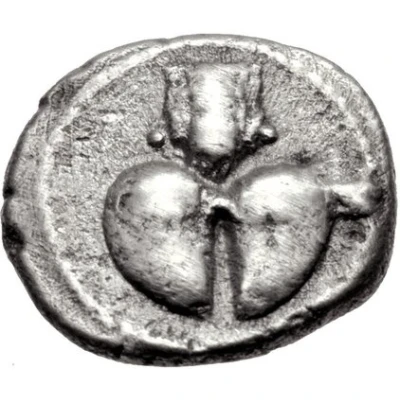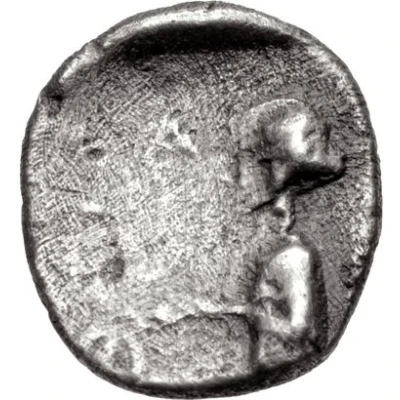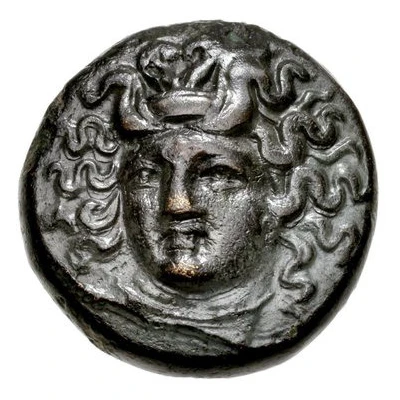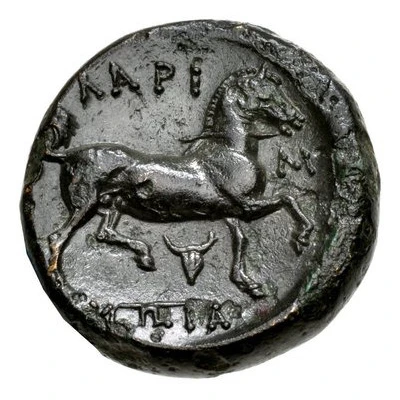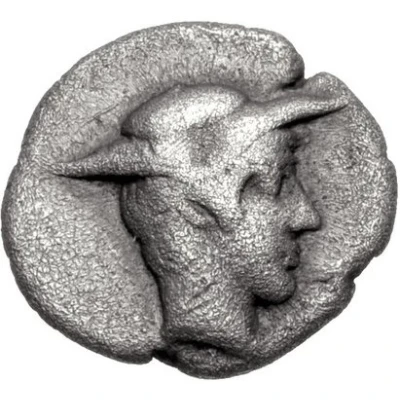
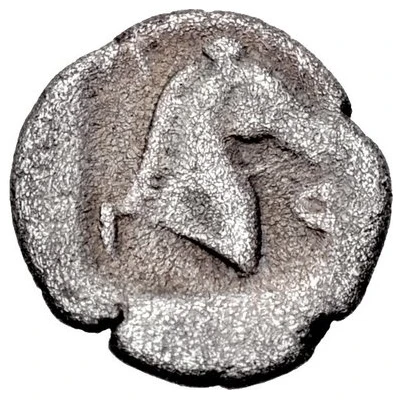

Obverse © Classical Numismatic Gallery – Reverse © Classical Numismatic Group, Inc.
Hemiobol 420 BC - 400 BC
| Silver | 0.4 g | 9 mm |
| Issuer | Larissa (Thessaly) |
|---|---|
| Type | Standard circulation coin |
| Years | 420 BC - 400 BC |
| Value | Hemiobol (1⁄12) |
| Currency | Drachm |
| Composition | Silver |
| Weight | 0.4 g |
| Diameter | 9 mm |
| Shape | Round (irregular) |
| Technique | Hammered, Incuse |
| Demonetized | Yes |
| Updated | 2024-10-10 |
| Numista | N#285465 |
|---|---|
| Rarity index | 100% |
Reverse
Head and neck of bridled horse right; Λ-Α-Ρ-Ι (the Ρ retrograde) around; all within incuse square.
Scripts: Greek, Greek (retrograde)
Lettering: ΛΑΡΙ
Interesting fact
The Hemiobol coin was used as a form of currency in ancient Greece, specifically in the city-state of Larissa (Thessaly) during the 5th century BC. The coin's name "Hemiobol" comes from the Greek words "hēmi-" meaning "half" and "bolos" meaning "throw", which refers to the coin's value being equal to half the value of a full "bolos" coin. The Hemiobol was made of silver and weighed around 0.4 grams, making it a relatively small and lightweight coin. Despite its small size, the Hemiobol played an important role in the economy of ancient Larissa and was widely used for everyday transactions.
Price
| Date | Mintage | VG | F | VF | XF | AU | UNC |
|---|---|---|---|---|---|---|---|
| ND (420 BC - 400 BC) | - | - | - | - | - | - |
Values in the table are based on evaluations by sales realized on Internet platforms. They serve as an indication only for Hemiobol (420 BC - 400 BC) coin.
